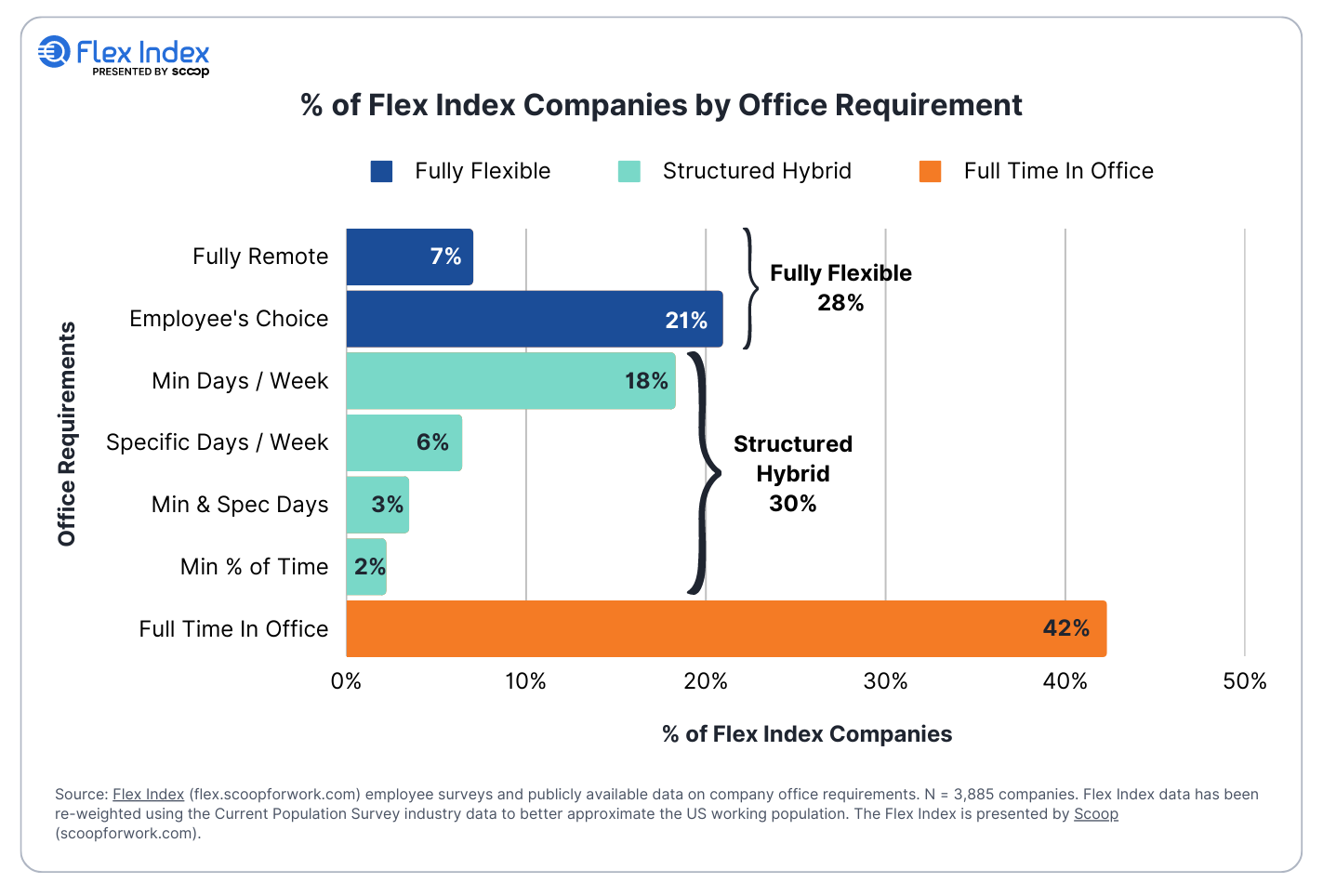Flex Index 5/16/23: The Future of Remote Work | Predictions from Nick Bloom
New Flex Perspective podcast!
Current Subscribers: 1,590; +130 since last week
Please forward to colleagues and friends! Link to subscribe.
Add Your Company to Flex Index
It takes less than 1-minute to add your company to Flex Index. Simply complete our short survey and we will handle the rest. Once published we will send the profile for review and make any necessary updates.
The Future of Remote Work | Predictions from Nick Bloom
Join host Rob Sadow as he sits down with Nick Bloom, Stanford University's renowned Economics Professor and one of the foremost experts on remote work.
In this episode we gaze into Nick’s crystal ball on the future of remote work. We cover:
Work in 2030: What will be the most popular flexible work models, and why?
Remote work moving offshore? Why Nick thinks a lot of fully remote jobs might not end up in the United States.
Remote work decision making: How Nick feels about Jamie Dimon’s comment that remote work slows down honesty and decision making.
Listen on Spotify, Apple Podcasts, or Amazon Music.
ICYMI: The Q2 Flex Report
It's been more than three years since the start of COVID-19 when hundreds of millions of people were first introduced to the experience of working remotely. While many parts of life have returned to pre-pandemic norms, where we work continues to be a hotly debated topic.
In just the last three months, we've seen a slew of announcements from larger companies shifting their office requirements. Disney increased its Minimum Days/Week per requirement to four days. Starbucks mandated corporate employees come into the office three days a week.
Even the big tech companies -- long viewed as the most remote-friendly large companies -- appear to be moving toward more on site work. Amazon and Lyft have announced plans to modify their flexible work policies in a push to bring employees back into the workplace at least half the week, and in some cases more.
So what’s happening? Is Fully Remote work vanishing? Is Full time in Office work becoming the norm? Or are these isolated examples that don’t reflect a larger trend?
Since our inaugural Flex Report in February 2023, we’ve added or edited thousands of companies on the Flex Index. We’ve tracked the changes across industries, regions, and company sizes - check out the full report!
Newly Added Companies
Fact of the Week
Full Time in Office Becoming Less Common
As Structured Hybrid models gain popularity, Full Time In Office is becoming less common. On an industry-weighted basis, Full Time In Office dropped from 49% of companies in Q1 to 42% in Q2. It appears that employers are finding Structured Hybrid to be a better balance between a desire for in-office collaboration and employee pushback on return-to-office mandates.
In the Media
Fortune: Employees and employers may finally be reaching a happy middle ground on remote work arrangements
Bloomberg: Firms that deploy a hybrid plan with specific expectations on when employees come in rose to 30% from 20% in recent months.
CNBC: As of November 2022, remote jobs made up less than 14% of postings advertised on LinkedIn, down from a high of 20.6% in March 2022
One Last Thing…
Add your company to the Flex Index with this 1-minute survey
Share this newsletter with friends and colleagues
About Scoop
Scoop is the fastest way to plan your next great office day. With Scoop, employees get more out of going in, with easily scheduled in-office days and invites. For HR and workplace leaders, Scoop provides insights on work location trends, office usage, and additional workplace solutions to get the most out of hybrid work.





